
You’d be hard pressed not to have seen at least one shot snapped by German photographer, Horst.
If nothing else, you’ve probably seen the video for Madonna’s “Vogue” in which the iconic pop star imitates Horst’s iconic 1939 image, “Mainbocher Corset”. Not incidentally, Horst shot that image for French Vogue, just one of the magazine chain’s international spin-offs for which he’d shoot over the course of his 69-year long career.
With his signature lighting style – he used four spotlights aimed from above – helped Horst turn subjects into pillars of personality. Even his still life pop as if they’re posing. No wonder his inimitable style influenced the works of Herb Ritts, Robert Mapplethorpe and countless imitators.
The son of a German hardware store owner and his wife, Horst Paul Albert Bohhrmann came into this world on August 14, 1906. Young Horst found his childhood cut short by two distinct events. The first came on June 28, 1914, when an assassin’s bullet took down Austrian Duke Franz Ferdinand, thus sparking the powder keg that led to World War I. Germany’s 1871 empire driven unification effectively alienated the nation from its European neighbors, all of whom were also building their international empires. Germany’s, however, proved one of the greatest, an historical fact that gave them great – and dangerous – power during the Great War. Following the country’s bloody defeat, the Allied Powers, including the United States, stripped them of their territories, as well as their dignity.

As his nation licked its war wounds, Horst found himself under attack by tuberculosis. The diagnosis effectively ended his elementary education and young Horst’s well-to-do family sent him to a sanitarium in Switzerland. Conquering his condition, Horst returned home, but found himself isolated from his peers. He took a job as a file clerk at an import-export firm, but still lacked direction. It’s during this time that Horst took a fateful trip to visit his paternal aunt, who introduced him to the German dancer, Eva Weidemann. Weidemann, in turn, introduced Horst to the arts.
Never the best linguist, Horst longed to express himself through visuals and in 1926 he enrolled in art school. Horst’s original interest lay in architecture, particularly the Bauhaus movement, which would later influence his highly stylized use of lighting. Upon graduating, Horst landed an apprenticeship in Paris with Charles-Edouard Jeanneret-Gris, the famed French architect otherwise known as Le Corbusier.
How about we take this to the next level?
Our newsletter is like a refreshing cocktail (or mocktail) of LGBTQ+ entertainment and pop culture, served up with a side of eye-candy.
Invigorated by the City of Lights, Horst took advantage of the thriving post-War café culture, in which he met French Vogue’s chief of photography, George Hoyningen-Huene. The elder artist would soon become both Horst’s lover and artistic mentor.
No doubt Hoyningen-Huene influenced Horst’s burgeoning style. An aristocrat by birth, Russian Hoyningen-Huene, too, fled war. His family picked up during the Russian Revolution and passed through London before settling in Paris. While there, Hoyningen-Huene drew on classic aesthetic to build a strikingly dramatic portfolio. Black and white popped unlike any color and Hoyningen-Huene’s theatrical eye lent itself perfectly to the post-war fashion magazines.
The talented young Russian would take over French Vogue’s photo department by the time he turned twenty-five. Hoyningen-Huene’s influence can be seen in Horst’s early work. The men started working together almost immediately after meeting. The German student started as Hoyningen-Huene’s model and assistant, but soon delved into his own career after Mehemed Agha, Vogue’s art director at the time, invited Horst to the magazine’s studio to practice on models. In November of 1931, Horst published his first picture in French Vogue, thus beginning Horst’s productive, lengthy relationship with the magazine and its international siblings. One year later, Horst had his first solo show at La Plume d’Or in Paris. Little did Horst know that exhibit would launch him into super art stardom.

Horst’s severe lighting and shadow play perfectly suited the dramatic characters of the inter-war period, as well as breathtaking still-lifes. Within four years of meeting Hoyningen-Huene and first picking up the camera, Horst found himself flying from Paris to London to New York, snapping the era’s biggest stars, writers and directors. By 1934, the talented photographer had shot Cole Porter, Elsa Schiaparelli, Noel Coward and Bette Davis. Horst’s rising star – and Hoyningen-Huene’s increasingly demanding attitude ended his relationship with Vogue. As his star fell and Horst’s rose, the men went their separate ways, with Hoyningen-Huene heading to Hollywood and Horst staying on at the famed fashion magazine.
Horst spent the next few years traveling as usual, garnering celebrated friends wherever he landed. Though Horst had a few lovers along the way – including an Italian aristocrat named Luchino Visconti, who directed Ossessione and Boccaccio ’70 – Horst remained content with photography.
In 1938, five years after Hoyningen-Huene left for Hollywood, Horst met Valentine Lawford, a British diplomat with whom Horst would love and live with for the rest of his life. The men soon decided to leave Paris for the hustle and bustle of New York. Before they left, however, Horst took one last shot: “Mosbacher Corset”.
Horst continued his Vogue work in New York, but a mustached man in his homeland unified Germany once again and World War II soon commenced. Familiar with the makings of war, Horst – who had already applied to become a citizen – packed up for the U.S. Army, with which he’d work as a photographer. While in the service, Horst received his American citizenship and dropped his complicated Germanic name, adopting Horst P. Horst, instead. His surname, however, often went ignored. Horst’s official status as an Army photographer – and famed talent – made him the perfect person to photograph the triumphant President, Harry Truman. Even the man who led America to victory – at the cost of Japan – couldn’t resist Horst’s charm and the two men formed a friendship.

President’s aside, Horst’s post-war life continued as it had before: he recommenced work for Vogue, shooting Rita Hayworth and Tallulah Bankhead, who readers may recognize from Tarnished Lady. Horst’s style, however, had to adapt to the changing times. Gone were the rigid lines of the sturdy actors and actresses. The people wanted more personable, approachable characters, so Horst’s style became more casual. Though he had to alter his portraiture, Horst quenched his yen for design when he designed his and Lawford’s Tunisian inspired home in Oyster Bay, New York.
Horst’s work took on a new direction in the 1960s, when Vogue’s editor, Diana Vreeland, send him abroad to cover the socialite scene. Lawford joined him, penning the lengthy articles that accompanied his lover’s images. The lovers worked together until Horst’s death.
The 1970’s weren’t kind to Horst. Yes, he traveled the world with Lawford and the men adopted a son, but his aesthetic fell out of vogue, if you will. While worked dried up at the magazine, Horst picked up assignments through House and Garden, which satisfied his architectural sweet tooth.
The 1980s saw a revival of Horst’s dramatic allure style. Life magazine commissioned the photographer to shoot an exclusive series, which then led to Horst’s 1984 tribute to old Hollywood, Return Engagement: Faces to Remember – Then and Now. Another Horst-related book came out that year: Horst, His Work and His World, a biography penned by his lover, Valentine Lawford.
Horst’s career reached new heights – or, at least, new honors – when Madonna recreated his most famous work, “Mainbocher Corset”, in the 1990 video for “Vogue”. Horst lived out the last years photographing as usual. It soon became clear, however, that the end was nigh. Horst flew to his home in Palm Beach, Florida, where he died on November 18, 1999, leaving a legacy greater than he could imagine.
Get a little closer to Horst with this gallery, starting with, yes, “Mainbocher Corset”.








For more information on Horst, why not check out his official site? Not only do you get some more biographical information, but they’ve got a swell gallery. Speaking of galleries, FKG Gallery also boasts a Horst collection.
And, since we’re feeling so generous, here’s a gallery of George Hoyningen-Huene’s works:










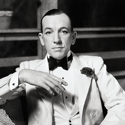
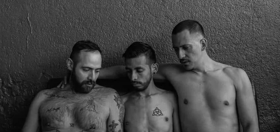

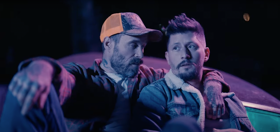

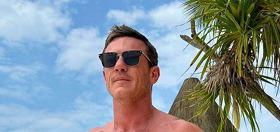

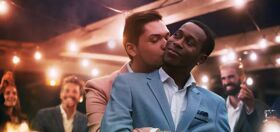

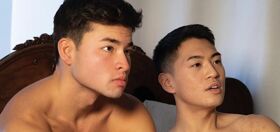


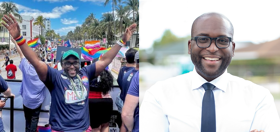

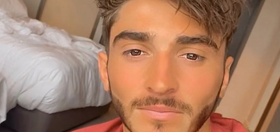
commeca
What a remarkable feature for Queerty.
Bravo! Bravo! Bravo!
Anto
I’ve always had a great awe for Horst P. Horst, who made such great masterpieces!
As I could understand, through his interviews and biographies, I liked him also as human being. He even adopted a son with his male lover and joined US Army during WWII!